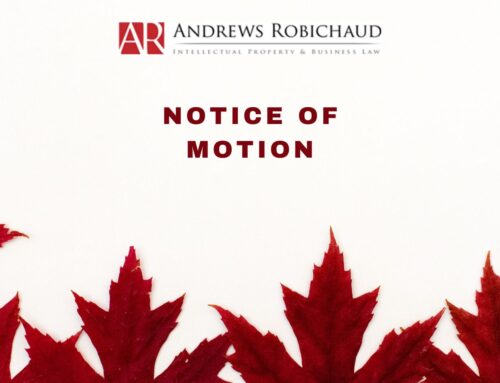Recently, the Supreme Court of Canada dismissed an application for leave to appeal in Travelway Group International Inc. v Group III International Ltd. With this dismissal, the findings of the Courts in this matter are final. As such, it seems like an excellent opportunity to review the history of this matter and how these decisions highlight the important benefits of securing a trademark registration against claims of infringement and passing off.
Federal Court
The SCC decision stems from trademark infringement and passing off actions between Wenger (now Group III International Ltd.) and Travelway concerning the use of the latter’s registered S Logos as well as modifications of these trademarks considered to be separate unregistered marks. Wenger asserted that the Travelway trademarks were confusingly similar to their previously used and registered Swiss Cross Designs. The trademarks of both parties were used in association with luggage, baggage and related goods
For background and images of the trademarks, please see the FC decision here
Wenger also sought expungement of Travelway’s trademark registrations on the basis that the registrations were invalid.
The Federal Court dismissed the actions noting the co-existence of other Cross Logos for similar goods impacted the distinctiveness of the Wenger trademarks and the extent of protection afforded such marks. The Court also found there were sufficient differences between the overall trademarks and as such there was no likelihood of confusion between the marks. The Court noted that as Travelway’s trademarks were registered this was considered a defense to the claims of infringement. No relief was provided.
Federal Court of Appeal
The FCA disagreed with the Federal Court’s decision and determined there was a likelihood of confusion based on the overall similarities between the respective trademarks. The FCA found that there was insufficient use of other third-party trademarks during the relevant period to affect the distinctiveness of Wenger’s trademarks. Further, the Appeal Court noted that the modifications to Travelway’s trademarks should not have been considered separate trademarks but rather changes to the registered trademarks which the FCA believed created a closer association between the respective marks. The FCA stated that the use of Travelway’s S Logos was an infringement of the Wenger Cross Logos and the appellants had established passing off contrary to Section 7(b) of the Act. The Court granted a permanent injunction and delivery up of goods.
The FCA sent the matter of expungement and damages back to the Federal Court to hear further submissions. The FCA stated “ the Federal Court may wish to consider whether a reference is appropriate to facilitate this determination. The Federal Court should determine the procedure that is most appropriate.”
The Federal Court granted the judgment for expungement on the basis of non-distinctiveness and non-entitlement but dismissed Wenger’s claim for damages. The FC decision raised the issue as to whether a registered trademark owner can use its own registration as a defense against infringement and passing off until such time as the Court expunges them.
Wenger appealed the FC decision on the sole issue of damages. The FCA held that Travelway was not liable for damages for infringement that occurred during the period in which its own trademark registrations were in effect. The Court noted that a registration is considered valid and the owner has exclusive rights to use of such trademarks (absent evidence of fraud, bad faith or wilful misrepresentation).
Supreme Court of Canada
The SCC dismissed the application for leave to appeal without reasons and with costs. The decision of the FCA stands and supports the view that the existence of a registered trademark is considered a complete defence against claims for damages in infringement and passing off cases while the registration is deemed valid.
The nature of these decisions further emphasizes the value of securing a trademark registration by expanding its defensive use and acting as a form of insurance against damages from infringement and passing-off claims.
Authored by Tracy Corneau & Steven Andrews






Leave A Comment